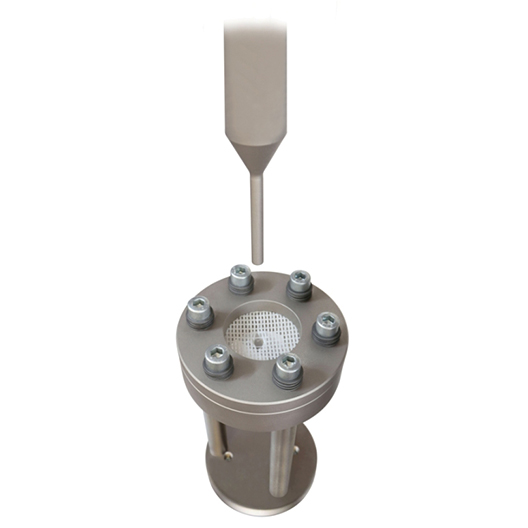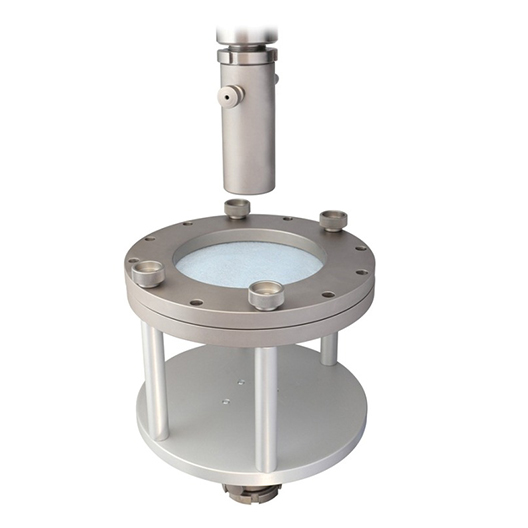Static Puncture Strength Test Fixture for Geotextiles according to ASTM D4833 or ASTM D6241
Model 145-45 (ASTM D4833)
This test fixture complies to ASTM D4833 and GOST R 56586 is used for evaluating the puncture strength of sharp objects such as rocks and stones that rest within soil.
The fixture consists of a ring clamping attachment for square sample that is clamped down in the non-slip way between lamping jig consisting of concentric plates with an internal diameter of 45 mm. There are 6 clamping screws that must be tightened to secure the sample. The diameter of the hardened puncture plunger (probe) is 8 mm, and it is flat with chamfered edge which contacts the specimen.
Connection to the Testing Machine:
The clamping jig and flat rounded puncture probe can be mounted into the testing machine via mounting (female) stud with clevis PIN.
The standard connection size is with internal diameter 20 mm and clevis PIN diameter 8 mm. Any other connecting details are available.
Model 174-150-50 (ASTM D6241)
This Static Puncture Strength Test Fixture is designed for Geotextiles and Geotextile Related Products and comply to ASTM D6241 Method B, ISO 12236 and GOST 5633.
ASTM D6241 is also commonly referred to as the CBR Puncture Resistance test. The California Bearing Ratio was adapted to replace both the Mullens Burst test D3786 and the Geomembrane puncture test D4833.
Both of the later tests have been deemed to produce too much variability because of the inconsistent nature of woven and non-woven fabrics. This procedure provides a much more uniform stress on the sample which better simulate real world conditions.
Geometry:
The standard square sample is clamped down in the non-slip clamping jig consisting of concentric plates with an internal diameter of 150 mm. There are 4 clamping screws that must be tightened to secure the sample. The diameter of the puncture plunger (probe) is 50 mm and it is flat with radial edge of 2.5 mm. There is also a standard specification for the hole opening which can be found in our official literature page.


